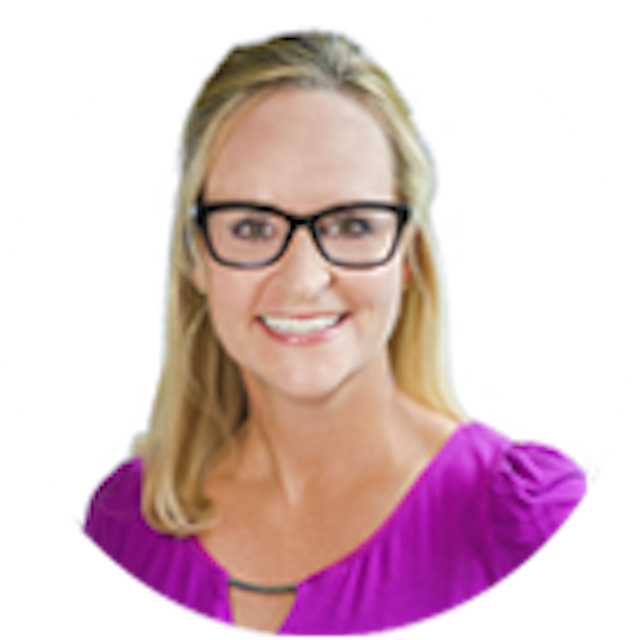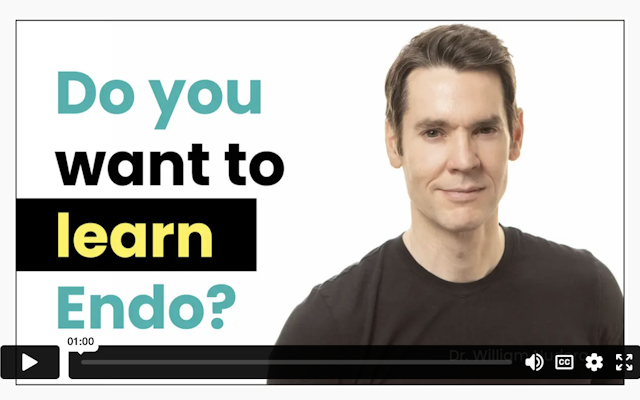I attended dental school in the early 90’s, a time when there was a wave of growth and change within dentistry. Of course, I had no real awareness of it at the time. I was focused on graduating. I was busy drinking from the fire hose of general dentistry, which, at that time, was still teaching us to place amalgams, preached that all orthodontic treatment should be referred to a specialist, and barely touched on the concept of dental implants. Placing implants was considered “out there” in the uncertain world of “experimental treatments,” which, to a fledgling dentist, is nowhere to be hanging out. Still, I was intrigued. I couldn’t help but think how nice it would be if they actually worked.
After graduation, I moved to Tampa and began looking for a job. I whipped up a CV and drove around town, stopping and dropping off one resume at a time. I was cold calling in pre-Internet days and guerilla marketing myself. After a week of receiving lukewarm responses, I visited a very large building in a not-so-nice part of town. I walked to the second level and managed to wend my way through the busy, semi-chaotic waiting room to find the office manager. She took all of five minutes to offer me a position. It didn’t faze her that I would not get my Board results, a.k.a. license, for another two weeks. That should have been a red flag, in the days preceding the corporate wave for fresh blood. But, I was naïve. I nervously and happily accepted the position. Alas, I started working in a large, disorganized Medicaid and HMO dental group practice.
This was the first time in my life that I felt extremely out of my comfort zone, but I learned a hell of a lot. My first week included many full mouth extractions and deliveries of immediate dentures. I was even scheduled to complete a maxillary tori removal. Yes, that’s right. No one there seemed to care or notice that I was a “newbie.” I had “DMD” next to my name and the rooms were full of waiting patients. So, I retreated into my closet of an office, pulled out my Oral Surgery textbook, read the chapter that included the procedure, memorized the incision design, the suture technique, and did it. I am not sure what drove me to stick with it; probably equal parts of pride, fear of failing, deep desire to do the best I possibly could for my patients, and the courage to suppress the little voice in my head that was starting to ask, “Why the hell did you choose THIS as your career?”
Looking back, I am grateful for the sink or swim experience that was my first job. It made me tough; it made me brave, and it showed me the world of oral surgery. The senior doctor, who owned the practice, literally shucked teeth so fast his assistants sometimes couldn’t keep up. At one point, I got stuck with a tough root tip, he came in, grabbed a surgical handpiece, and showed me how to trough around the root and elevate it out in about 20 seconds before dashing out to do more extractions.
I left that office after 24 months, purchased a small practice, and began making it my own. I brought with me the mentality that, in order to grow, I must continue to swim. The next ten years were busy. I sold my practice and moved to the suburbs, building a scratch practice that grew surprisingly fast. I had four children while managing a full-time practice. I was committed to taking CE courses geared towards being a better restorative dentist, as often as I could, while raising my young family. Those days were focused on composite quadrant dentistry, occlusion, and cosmetic procedures. My patient demographic had a limited number of edentulous patients. I was beginning to see more patients that had single implants placed by oral surgeons that now needed to be restored. At that time, I relied on dental reps to walk me through the names of the implant parts and help from my lab techs to teach me the restorative process.
Along my journey, I realized I needed help. I met a person that became a pivotal influence in my career and my personal flotation device, my mentor, Dr. Tony Feck. I became affiliated with his practice management company, Sunrise Dental Solutions, and began building my third dental practice. Each year, at the Sunrise Summit, I would meet very successful dentists from around the country, listen to them share their best practices with the group. I soaked up as much I could. I wanted to emulate their success. A recurrent theme became apparent: they were all excellent clinical dentists. They were superb businesspeople. They were committed to investing in serious continuing education. And, they all placed the majority of their own implants. General dentists not just restoring implants but also placing them! I was inspired and began the process of learning about the vast world of implants; my journey into implantology had begun.
To gain more exposure, I decided to take a mini-course on how to place implants using a Panorex. The course made it seem simple, with limited armamentarium. Something in my heart knew that there was more to it, but it pushed me forward. I went back to my practice with my new implant kit, surgical handpiece and began placing a few simple implants. I am not a “cowboy” type of dentist. I like precision and predictability. But, I quickly realized that I didn’t know what I didn’t know. Implantology was not, as it turned out, that simple after all.
I was not willing to give up, so I did my research and enrolled in a year-long maxi-course called “Implant Educators.” I stopped placing implants in my practice until I received comprehensive training about the planning and surgical aspects of implantology and gained supervised hands-on surgical experience on live patient cases. I planned appropriately and implemented what I learned.
Implants are now one of the most enjoyable and even relaxing procedures that I do. One thing I realized immediately was that site development through guided bone regeneration and socket grafting were huge keys to making placement straightforward. That led to my understanding that it isn’t all about bone, but also soft tissue architecture. So, guess what was next? The journey into soft tissue surgery, including incorporating platelet rich fibrin (PRF) techniques and tissue grafting began. Drs. Carl Misch and Michael Pikos were instrumental in helping me gain this experience. Their continuums were excellent and practical. Today, I read as many textbooks and articles as I can get my hands on regarding implant and surgery, and I am admittedly nerdy about it.
Placing implants has been so wonderfully transforming and re-invigorating, in my experience, that the paradigm shift required to incorporate implant placement into my existing, busy general practice is totally worth all the effort. I am on a path of continual learning, and every couple of years I find that techniques change, improve, and advance. The challenges that cases present are like a puzzle, some can be simple and some take a lot of time and patience. Each one brings a sense of satisfaction. It’s an exciting time in the world of dental care. It’s never too early to push yourself out of your comfort zone, and it’s never too late to dive into something bigger and better than status quo. All it takes is desire, sincere effort, and a firm commitment to keep swimming.
 By:
By: 



